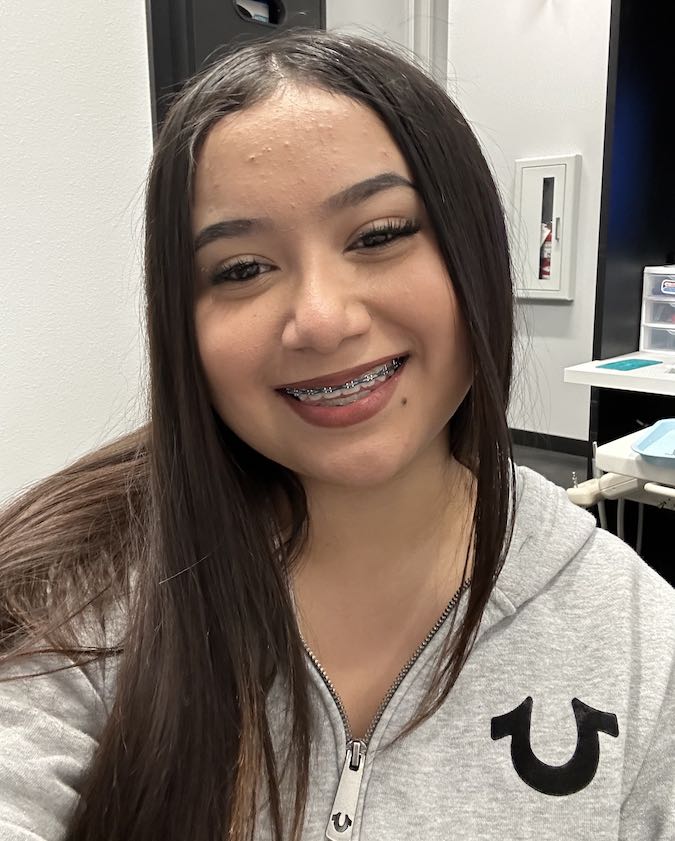While it's common knowledge that eating sugary foods can increase your risk of tooth decay, did you know that cavities are actually contagious? As strange as it may sound, the bacteria that cause cavities can be transmitted through saliva when people share food, drinks, and even kisses!
Our teammates at Risas Dental understand that this information can be a bit mind-blowing, but it's also pretty interesting. We've put together this informative guide that details the ins and outs of cavity transmission, along with some important preventative steps to take to boost your dental hygiene routine.
The Science of Cavity Transmission
The science of cavity transmission is actually quite simple — your saliva can transmit cavity-causing bacteria to other people. People carry over 700 types of bacteria in their mouths that they can transmit to others through normal activities. Just like you can spread a cold or flu virus through saliva droplets when you cough, sneeze, or share eating utensils, you can do the same with cavities.
Bacterial Causes of Cavities
Believe it or not, all cavities are caused by bacteria. In fact, some dental professionals even refer to cavities as bacterial infections of the teeth. The human mouth contains many types of bacteria, but research has shown that Streptococcus mutans is the most common culprit for cavities. These bacteria live in dental plaque and can increase the risk of cavity development when it multiplies.
How Do Bacteria in the Mouth Contribute to Tooth Decay?
Consuming sugary foods can increase the risk of cavities because the bacteria in the mouth that break down sugars can create plaque acids. When the acids dissolve on the teeth, they can contribute to tooth decay. Smoking dries out the tissues in the mouth by reducing saliva production, which can put people at a higher risk for developing cavities.
Which Types of Bacteria Are Most Commonly Associated With Cavities?
The most common type of bacteria associated with cavities is Streptococcus mutans. This type of bacteria thrives when the foods you eat create a low pH balance in the saliva. It secretes acid, which sticks to the teeth and can cause mineral loss and cavities.
How Do Bacteria Spread From Person to Person?
Bacteria are spread from person to person in several ways. If a person touches a contaminated surface and has bacteria on their hands, they can spread bacteria to others through touch. Sneezing and coughing can transmit saliva droplets to others through the air, and close contact such as kissing can transfer bacteria from one person to another.
Transmission Modes of Cavities
Saliva is the single transmission mode of cavities. Kissing, sharing food and beverages, and eating from the same utensils can spread the bacteria that cause cavities. Saliva that sprays from the mouth when coughing or sneezing can also transmit cavity bacteria.
Can Cavities Be Spread Through Saliva?
Cavities can be spread through saliva in a few ways. When a person has Streptococcus mutans bacteria in their saliva and kisses someone on the mouth, their saliva can transmit the bacteria to whomever they kiss. If someone takes a bite out of a hamburger or other hand-held food and another person takes a bite from the same food, cavity-causing bacteria can be transferred through saliva on the food. Sharing eating utensils and straws can also cause cavity bacteria in saliva to spread.
What Are the Risks of Sharing Toothbrushes and Other Oral Hygiene Tools?
Most dental professionals warn against sharing toothbrushes and other oral hygiene tools. In addition to potentially spreading the bacteria that causes cavities through saliva, these tools can also transmit blood and contagious viruses.
How Can Parents Pass Cavities to Their Children?
Parents can pass cavities to their children through activities that transmit saliva. Kissing your little one on the mouth, sharing food, and even popping their pacifier in your mouth can create a risk of transmitting cavity-causing bacteria.
Risk Factors for Cavity Transmission
The main risk factor for cavity transmission is shared saliva. Mothers can transmit cavity bacteria in their saliva to their children by pre-chewing their infant's food, using the same toothbrush, and even cooling their food by blowing on it. Adults with active cavities can transmit bacteria through close contact.
Lifestyle and Environmental Factors
Lifestyle factors that may contribute to cavity development include poor oral hygiene, sugary diets, acidic carbohydrates, and inadequate fluoride intake. Not only can fluoride help to prevent cavities, but it can also reverse them in some cases.
A lack of fluoride in drinking water is the most common environmental factor linked to the risk of cavities. Fluoride strengthens tooth enamel and makes teeth less prone to cavity development. Children who drink water with little to no fluoride may form weaker enamel, which can affect the teeth's natural ability to re-mineralize.
How Do Lifestyle Choices, Such As Diet and Smoking, Affect Cavity Transmission?
The bacteria that cause cavities can be transmitted through smoking if a person with cavity-causing bacteria in their saliva shares a cigarette. The same goes for sharing food. If someone with cavity-causing bacteria in their saliva takes a bite of food and hands you their fork or spoon, you could "catch" a cavity.
What Environmental Factors, Such As Water Quality and Air Pollution, Impact Tooth Decay Rates?
Some studies have shown that areas where pollution is high have high cavity rates among children. Highly polluted areas may also increase the levels of toxic compounds in children's teeth. Scientific studies also suggest that drinking water containing perfluoroalkyl and polyfluoroalkyl substances (PFAs) can contribute to cavity development. PFAs are chemicals that were once used to make nonstick cookware and other products.
Cavity Treatments at Risas Dental
If you think you might have a cavity or you're concerned about tooth decay in your teen or little one, our teammates at Risas Dental are happy to help. We "speak patient" to ensure clear communication and complete understanding of our dental services, and we treat adults, teens, and children. Schedule an appointment today.
Frequently Asked Questions (FAQs)
Are cavities really contagious?
Some research has shown that mothers can pass cavities onto their children through activities such as blowing on food and sharing eating utensils. This is due to the potential exchange of saliva that contains cavity-causing bacteria.
Can you get cavities from kissing?
Kissing can sometimes lead to the transfer of cavity-causing bacteria. Since kissing sometimes involves an exchange of saliva, a person with cavity-causing bacteria in their saliva can unknowingly transfer bacteria to the person they kiss. Once inside the other person's mouth, the bacteria can colonize and lead to cavities.
Is it safe to share toothbrushes with family members?
Most dental professionals recommend against sharing toothbrushes with family members for a few reasons. Brushing your teeth can sometimes cause bleeding gums, especially in people with gum disease. Blood on the toothbrush can transfer into the next user's mouth. Also, viruses and bacteria can easily be transferred from person to person via shared toothbrushes.
How do you know if you have cavities?
In its early stages, a cavity might go unnoticed and not cause any physical symptoms. However, you may notice brown or black specks on the teeth that look like stains, and your teeth may have visible holes or "pits" in the enamel. As cavities progress, symptoms can include pain when biting down and tooth sensitivity.
What happens if cavities go untreated?
If cavities go untreated, it can lead to further decay that makes its way into the tooth pulp. This can increase the risk of infection and inflammation, and the tooth may require root canal treatment.

